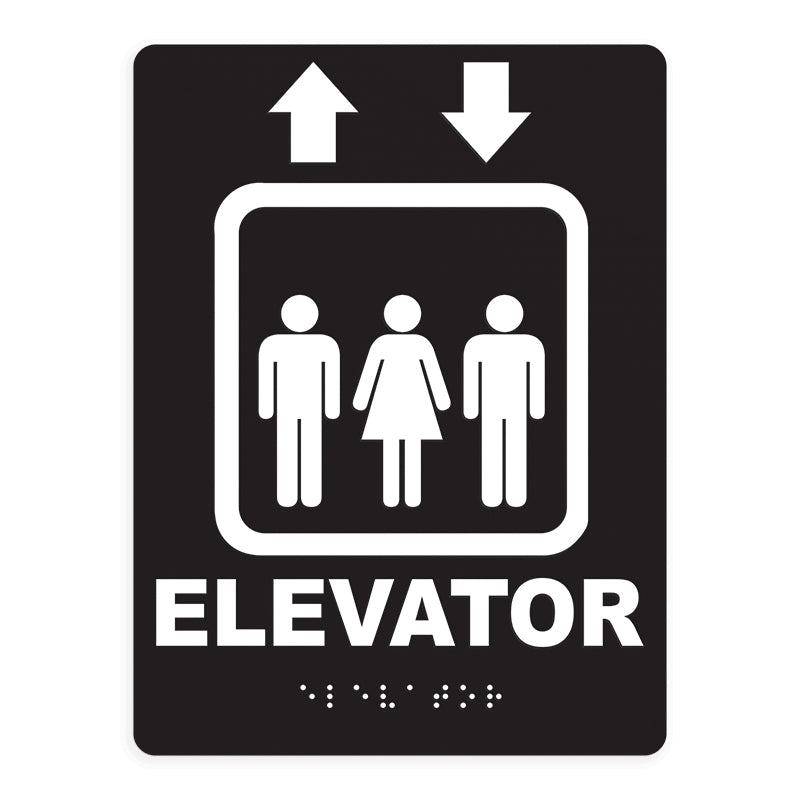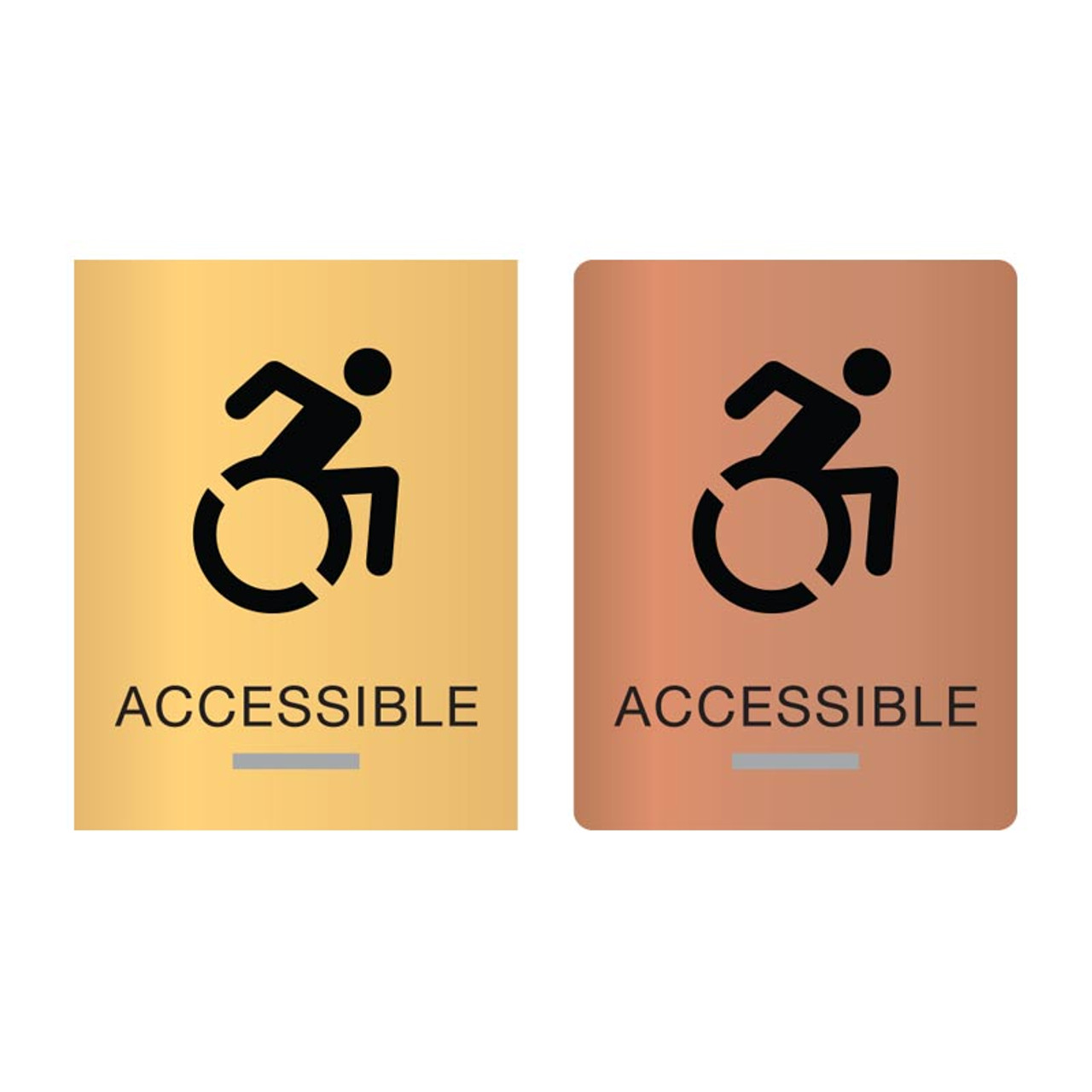Discover the Significance of ADA Signs in Public Spaces
Discover the Significance of ADA Signs in Public Spaces
Blog Article
Checking Out the Trick Attributes of ADA Indications for Improved Availability
In the realm of accessibility, ADA indications serve as quiet yet effective allies, making certain that rooms are navigable and comprehensive for individuals with specials needs. By incorporating Braille and responsive components, these signs damage obstacles for the visually damaged, while high-contrast color systems and readable typefaces cater to varied visual needs.
Significance of ADA Conformity
Ensuring conformity with the Americans with Disabilities Act (ADA) is crucial for fostering inclusivity and equal access in public rooms and work environments. The ADA, passed in 1990, mandates that all public facilities, companies, and transportation solutions fit individuals with handicaps, guaranteeing they appreciate the very same civil liberties and chances as others. Compliance with ADA requirements not just satisfies lawful commitments however likewise enhances an organization's track record by demonstrating its dedication to diversity and inclusivity.
One of the crucial elements of ADA conformity is the implementation of available signage. ADA signs are made to guarantee that people with disabilities can conveniently navigate with spaces and structures. These indicators should comply with specific standards regarding dimension, font style, color comparison, and placement to guarantee exposure and readability for all. Appropriately carried out ADA signage aids eliminate barriers that people with disabilities commonly experience, consequently promoting their independence and confidence (ADA Signs).
Furthermore, sticking to ADA laws can alleviate the risk of potential penalties and legal effects. Organizations that fail to abide with ADA guidelines might face charges or suits, which can be both monetarily troublesome and destructive to their public photo. Hence, ADA conformity is essential to promoting a fair environment for every person.
Braille and Tactile Elements
The incorporation of Braille and responsive aspects right into ADA signage symbolizes the principles of availability and inclusivity. It is commonly placed below the corresponding text on signs to make certain that people can access the details without visual support.
Responsive components expand past Braille and include increased symbols and personalities. These components are developed to be discernible by touch, enabling individuals to determine area numbers, bathrooms, exits, and various other vital areas. The ADA establishes details guidelines pertaining to the dimension, spacing, and positioning of these tactile aspects to enhance readability and make certain consistency throughout different environments.

High-Contrast Color Design
High-contrast shade schemes play a critical role in enhancing the presence and readability of ADA signs for individuals with aesthetic problems. These schemes are necessary as they optimize the difference in light reflectance in between message and background, ensuring that indications are easily discernible, also from a this page distance. The Americans with Disabilities Act (ADA) mandates using certain color contrasts to fit those with minimal vision, making it a vital element of compliance.
The efficiency of high-contrast colors exists in their capacity to stand apart in different lights conditions, consisting of dimly lit settings and areas with glare. Typically, dark message on a light history or light text on a dark background is used to achieve optimal contrast. Black message on a white or yellow background provides a raw aesthetic difference that helps in quick acknowledgment and understanding.

Legible Fonts and Text Size
When taking into consideration the design of ADA signs, the selection of understandable fonts and proper message dimension can not be overemphasized. These elements are vital for guaranteeing that indicators are available to individuals with aesthetic impairments. The Americans with Disabilities Act (ADA) mandates that fonts need to be sans-serif and not italic, oblique, manuscript, highly decorative, or of uncommon form. These needs assist make certain that the message is easily understandable from a range which the personalities are appreciable to diverse target markets.
The size of the message also plays an essential duty in availability. According to ADA guidelines, the minimal text height should be 5/8 inch, and it ought to increase proportionally with checking out distance. This is specifically important in public rooms where signage needs to be read promptly and accurately. Consistency in text size adds to a cohesive visual experience, helping people in navigating environments efficiently.
Moreover, spacing in between lines and letters is important to legibility. Sufficient spacing protects against personalities from appearing crowded, improving readability. By sticking to these criteria, designers can considerably enhance ease of access, making sure that signs serves its desired objective for all individuals, despite their aesthetic capabilities.
Effective Positioning Strategies
Strategic placement of ADA signs is crucial for taking full advantage of availability and guaranteeing conformity with lawful criteria. ADA guidelines specify that indications need to be placed at a height between 48 have a peek at these guys to 60 inches from the ground to ensure they are within the line of sight for both standing and seated individuals.
Furthermore, indicators must be placed nearby to the lock side of doors to permit very easy recognition prior to entry. Uniformity in sign placement throughout a center improves predictability, lowering complication and enhancing overall user experience.

Conclusion
ADA indicators play an important function in advertising accessibility by integrating features that attend to the demands of individuals with handicaps. These elements collectively foster a comprehensive setting, underscoring the relevance of ADA compliance in making certain equivalent accessibility for all.
In the realm of availability, ADA indicators offer as quiet yet effective allies, guaranteeing that areas are navigable and inclusive for people with handicaps. The ADA, established in 1990, mandates that all public facilities, employers, and transport solutions fit people with specials needs, ensuring they enjoy the very same legal rights and opportunities as others. ADA Signs. ADA indications are made to ensure that individuals with handicaps can conveniently browse through areas and buildings. ADA standards specify that indicators need to be mounted at an elevation in between 48 to 60 inches from the ground to guarantee they are within the line of sight for both standing and seated individuals.ADA indications play an essential duty in advertising access by incorporating features that attend to the needs of people with impairments
Report this page